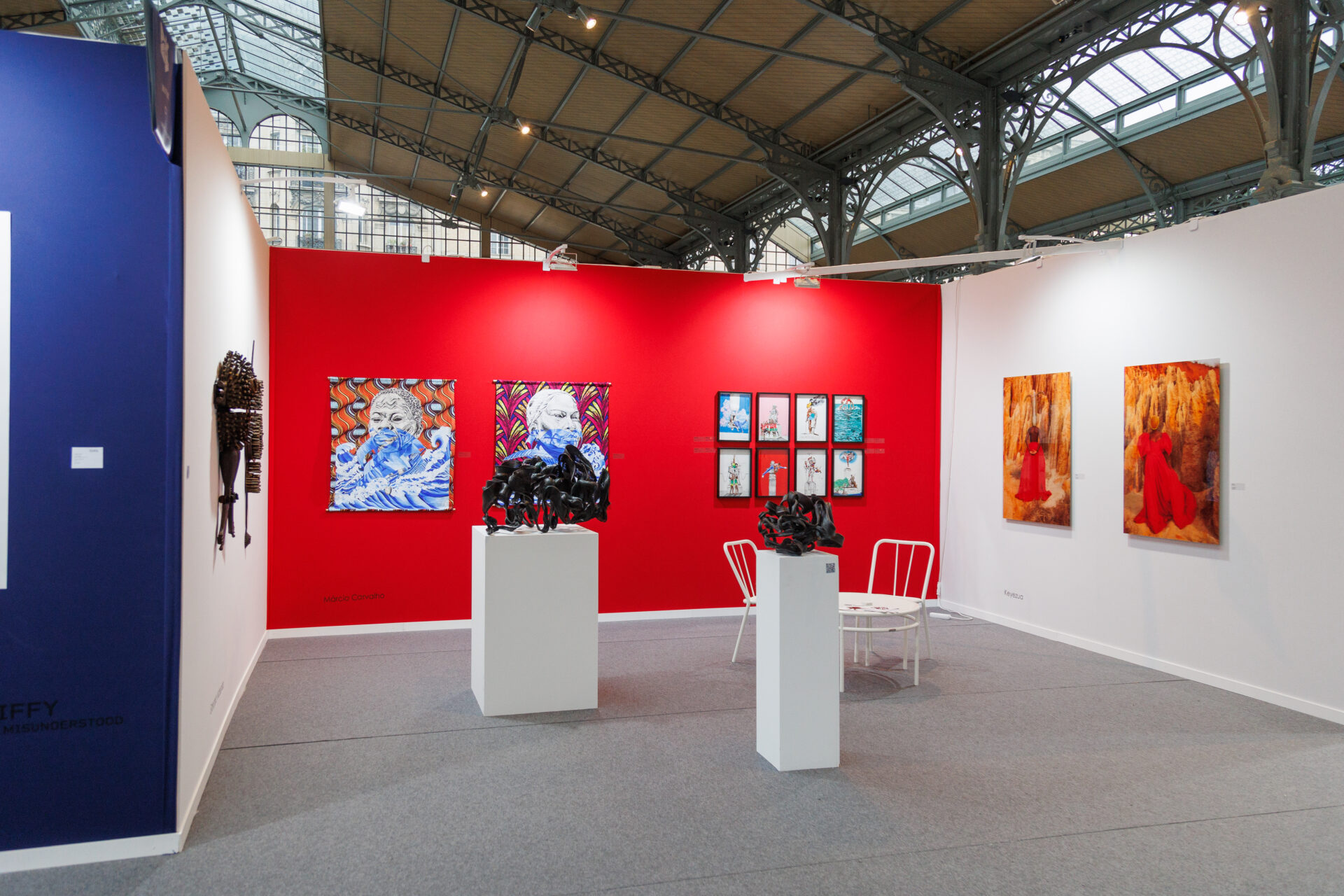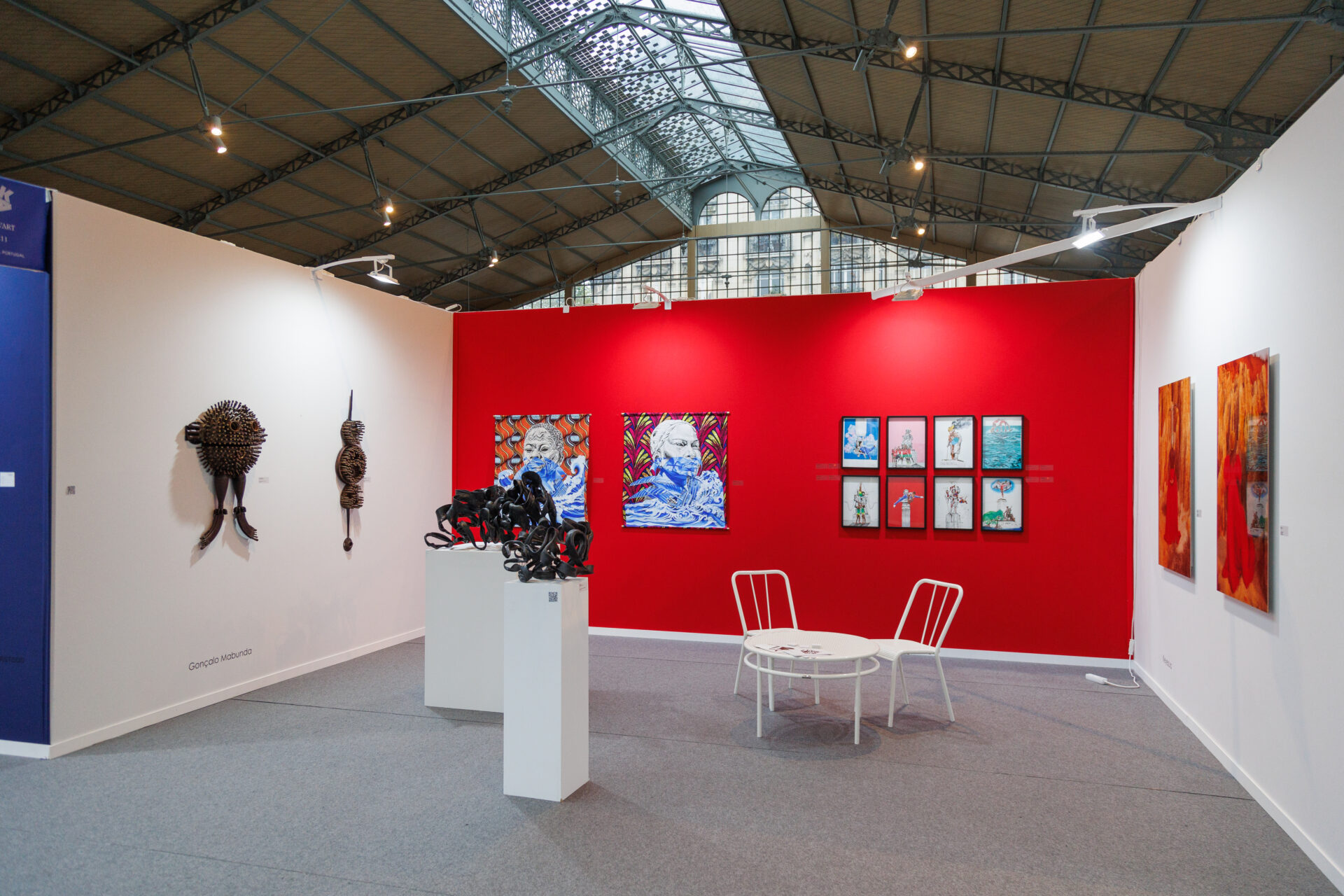AKAA PARIS
Márcio Carvalho | Gonçalo Mabunda | David Brits | Keyezua
We present a rich in media diversity compilation of works from five African artists whose practice is deeply rooted in the research of the symbolic materials through which we forge our understanding of human existence. Situated in the different sociocultural context of each of them, the dissection of history leads them to reflect on the mythologies that lay on transmitted thought –the hegemonic Western focused epistemology— and/or eventually delve into the postcolonial question.
David Brits (b.1987, South Africa) explores practices of object-based experimentation as part of a social optical challenge under the deconstruction of standardised points of view in the public sphere. He is an artist whose practice involves research and his technical multiplicity converges in printmaking, drawing, installation, film and the manipulation of archive material. We present his series of sculptures ‘Sinusoidal Nebulous’ (2020-2021), made out of carbon fibre, that is informed by a fascination with the Greek mythological figure of the ‘Ourobouros’, the snake that bites its tail, a figure for the infinite circularity or endlessness, which is a recurrent trope in human dialectics. With this reflexive work, David points to signal the permanence in the subconscious of the abstract concepts that we process and assimilate through symbolic forms and hence, demonstrates that human thought is sustained by a mixture of the rational with the fantastic.
Gonçalo Mabunda (b.1975, Mozambique) is interested in the collective memory of his country, Mozambique, which has only recently emerged from a long and terrible civil war. He works with arms recovered in 1992 at the end of the sixteen-year conflict that divided the region. In the sculptural masks we selected, he gives anthropomorphic forms to AK47s, rocket launchers, pistols and other objects of destruction. While the masks could be said to draw on a local history of traditional African art, Mabunda’s work takes on a striking Modernist edge akin to imagery by Braque and Picasso. The deactivated weapons of war carry strong political connotations, yet the beautiful objects he creates also convey a positive reflection on the transformative power of art and the resilience and creativity of African civilian societies. The pieces are without a doubt an ironic way of commenting on his childhood experience of violence and absurdity and the civil war in Mozambique that isolated his country for a long period.
Márcio Carvalho (b.1981, Portugal/Angola) engages with the notions of autobiographical and collective remembrance through a body of work that examines public life and archives, autobiographical and collective memory, focusing on the acts of remembering and their biological, cultural and social influences. We introduce two pieces from his series “Falling Thrones”, consisting of drawings of remarkable size where we find monuments dedicated to Luís Vaz de Camões or Cecil Rhodes surrounded by athletes trying to overthrow these historical figures in public space. These drawings are possessed by a certain irony, fictional and almost utopian, representing the desire and the affirmation of the struggle of the African peoples against their colonisers, in the logic of a championship sports game, such as: Queen Ginga (Angola) or Maji Maji Rebellion (Tanzania. The fall of these symbolic figures is directly related to the movement of the body, with that performativity present in play, in dance, in the musical celebration of communities and in all rituals that are not held hostage to an order outside a particular culture.

